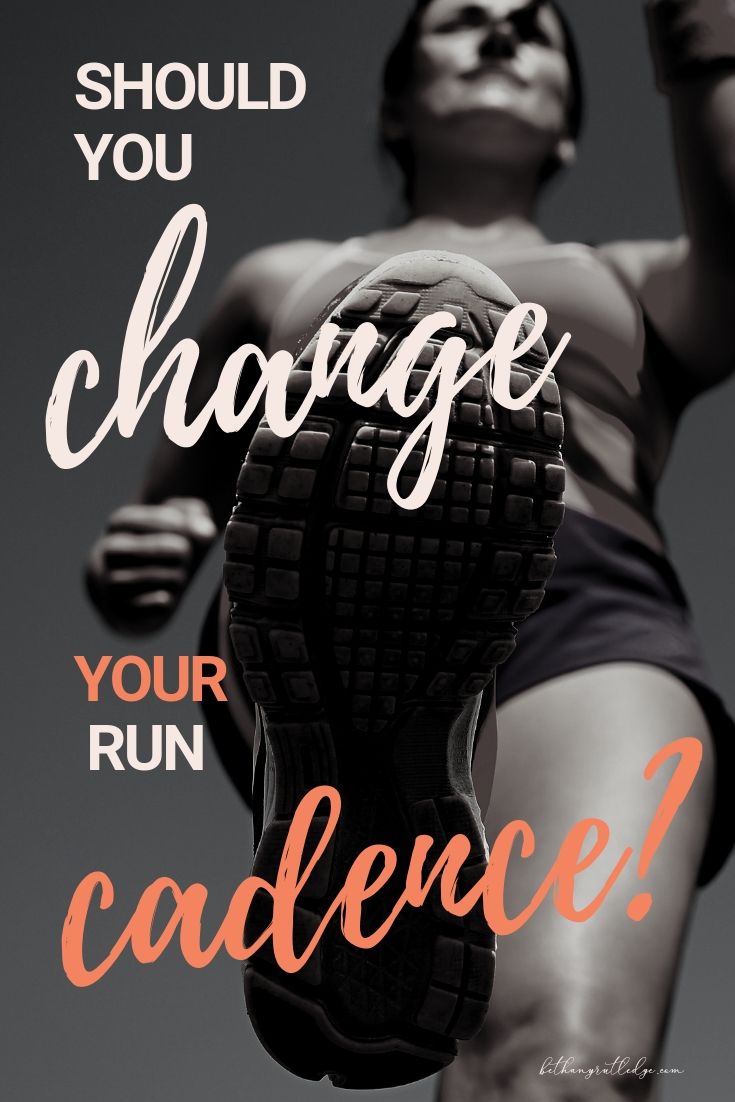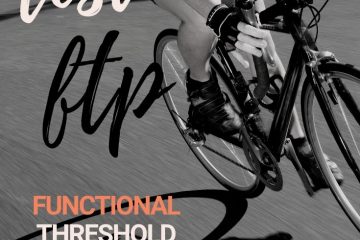The truth about running cadence

The truth about running cadence
What they say:
If you just fix your running cadence, I’m sure you’ll PR.
Your running cadence is too slow for you to be fast.
Do you even know your run cadence, bro?
Just kidding, no one says that last one.
But what do these statements all have in common—they’re looking at cadence in a vacuum instead of one variable in a whole sea of them.
And that’s what we’ll explore today in should you try to change your run cadence?
What is run cadence?
Cadence, aka stride rate and RPMs, is literally the amount of footstrikes you take typically expressed in a minute i.e. “160” refers to 160 foot strikes in a minute’s time.
Why is everyone worried about run cadence.
Cadence is an important component of running style and performance. A higher cadence is correlated with better runners and less injuries and most elite runners have a stride rate around 180 or so.
But, a faster cadence isn’t an easy answer to becoming a better runner. Unfortunately, it’s not that simple.
The idea of perfect run cadence is a classic example of conflagration of correlation versus causation. And things become more complicated when you consider that running faster is the actual equation of either more steps or bigger strides.
So how can we unravel this? Let’s go back to when running cadence became a “thing.”
Here’s how things went down way back when:
At the 1984 Olympics, Coach Jack Daniels found that most runners averaged around 180 steps per minute. He concluded that most elite runners ran around this cadence and that most amateur runners could potentially benefit by gradually increasing their cadences.
But he doesn’t suggest that increasing your cadence will make you a much faster runner. Indeed, in his amazing book Daniels’ Running Formula which you should pick up if you don’t have—he postulates that a higher cadence would lead to greater running economy.
That finding gradually turned into 180-is-optimal lore that has persisted over the years, with many amateurs touting 180 as a quick fix for complex issues with form and gait.
The issue? Now lower-cost access to features like cadence, wrist heart rate, and ground contact time. But without knowing how to use those features, it raises more questions than answers.
Related: Everything you need to know about heart rate training
What we know about running cadence
Better runners typically have a higher cadence
Clearly, cadence in the 180 and above range is a key feature of runners who are fast and efficient.
Higher cadence runners typically have a shorter stride length and a midfoot strike meaning they’re not braking with every step. They also have less ground contact time. All things things are associated with better running, but…
Sadly, the average runner cannot magically boost their running by simply increasing steps and keeping everything else the same.
In fact, that’s a surefire way to lead to injury.
Correlation of cadence and performance
In general higher cadence is good. A slower cadence means longer strides which means more/higher airtime which means a great impact/chance for injury upon landing.
One recent study by researcher Bryan C. Heiderscheit concluded that “subtle increases in step rate can substantially reduce the loading to the hip and knee joints during running and may prove beneficial in the prevention and treatment of common running-related injuries.”
And according to coach Jay DiChary, many tout the idea of 180 steps a minute as the gold standard. He says: “Some research does support 180 as an average optimal value, but not everyone’s average. So it serves as a nice reference point, but it’s not absolute.
Your optimal cadence depends on your muscle fiber type, limb length, tendon density, terrain, and speed. World records have been achieved at cadences between 172 and 212 steps per minute. I wouldn’t stress about where you fall in this range or how close your cadence is to 180.”
Related: What’s the deal with cadence and cycling?
The bottom line about running cadence
While you might want to consider modifications to your technique the idea that cadence is the most important key to success is false. Furthermore, drastic sudden changes in running form can overload different muscle groups that aren’t used to bearing the load.
Think about it this way: For your entire life your bones, muscles, tendons, ligaments, and joints have been used to precise infinitely repeatable movements when you run. And something that seems like a small change can have a drastic consequences.
Should you change your run cadence?
And if so, how?
So what should you do instead? In a perfect world, you’d have your gait assessed by a professional, then work hand in hand with a coach to gradually change your gait.
But if you’re determined to change your cadence on your own, stick to a slow and gradual change. For instance, the first few weeks only do 10% of your normal run volume with your “new” form.
How to test your run cadence
It’s likely that at some point you’ve thought about your run cadence and either tested it out either the old fashioned way (by counting your footstrikes for thirty seconds) or by running along with a metronome.
Cues for increasing your run cadence
Increasing your run cadence is something that should be attempted gradually. A beat, like music, can be a helpful cue.
If you are in the process of (slowly, safely) trying to adjust your run cadence you probably already have the tools to do so at your fingertips.
Here are a few of our favorite ways to monitor run cadence!
Spotify Running –
The first easy way to monitor your cadence is by using Spotify. Using the Spotify running feature, it will pick songs based on your past play history and adjust the bpm of the song – anywhere from 100 to 200 bpm! Select browse – genre – running to get started with this feature
Garmin Metronome –
If you already have a later model Garmin of 305 or newer then you already have a built- in metronome that allows a range of BPMs. For example, you can set the 735 with a range of 120 – 240 beats. Note: in many of the newer models the metronome is available in the ‘activity settings’ menu of the run activity.
Run Cadence App –
You can also use a free app to track your cadence as you run
Running Metronome –
I can’t think of many situations where you would need to purchase a standalone running metronome, but if you do, then there are plenty to choose from.
Do you monitor your running cadence? Have you tried to alter your run cadence in the past? Let us know in the comments!

Want some virtual or in-person company on those long runs? Training is more fun with community. Check out Atlanta Tri Club for group training and Energy Lab for triathlon and swim coaching!

Hi, I’m Bethany–coach, author of Courage to Tri, 2x Kona qualifier, and twin mom. I believe if you have a body you’re an athlete. Grab my free 5k plan to start your own athletic journey.
More Running Resources
- Find your runner personality [ to go faster]
- Top 4 worst new runner mistakes
- How does Garmin race predictor work?
- Essential Running Gear for Women
- The best 5k race strategy for all levels
- How to [really] improve your running

More Running Cadence Resources
3 Ways to Increase Running Cadence for Speed | Competitor.com
Report: The Impact of Running Cadence on Running Economy (ECOR and RE) | TrainingPeaks
What Is My Running Cadence And Should I Care? – Runner’s World
Running Cadence: Why it Matters and How to Improve Yours | Wahoo Fitness Blog
Prevent Injury by Improving Your Running Cadence



16 Comments
Deborah Brooks · July 24, 2019 at 11:34 pm
I have tried to increase my cadence in the past and even have used a metronome. Did not really get too far. I think am too old to change now!
Kim G · July 25, 2019 at 1:57 am
I’ve tried to increase my cadence in the past but wasn’t very successful. Maybe it’s time to try again!
Abbey Sharp · July 25, 2019 at 3:02 am
This post is so helpful! Love these tips
Cedar · July 25, 2019 at 2:53 pm
I had no idea that Spotify has a running feature! I’m gonna have to try that. This was such an interesting post. I vaguely remember my high school cross country coach telling me it was best to have 3 steps per second (aka 180 per minute) but have never really looked into cadence. Thank you for sharing!
Leslie · July 25, 2019 at 9:51 pm
This is so helpful for any runner! Thanks for sharing your wisdom here!
Jenn · July 26, 2019 at 10:40 pm
When I used to help with running clinics, cadence was always a big topic. I check in on mine from time to time, but I don’t pay enough attention. I’m just out there for the fun of it, and sometimes, I let technique go by the wayside.
Bethany · July 27, 2019 at 1:29 pm
If you’re mostly out there for the fun of it, than focusing too much on run cadence might take some of the fun away. LOL. Sounds like you’re doing great to me!
Michelle @ Running with Attitude · July 27, 2019 at 12:34 am
I’ve been working with my run coach on improving my cadence. I agree that it’s not a standalone “fix” and should be part of a broader training strategy.
Bethany · July 27, 2019 at 1:28 pm
Thanks for the comment. I definitely agree with you on run cadence as part of a much greater whole.
Kimberly Hatting · July 27, 2019 at 3:31 am
I have wondered about my cadence. I am tall, with long legs. Making my legs move faster than they want is awkward LOL
Bethany · July 27, 2019 at 1:27 pm
Yes! It would be interesting for you to test your run cadence.
Coco · July 27, 2019 at 11:01 am
I didn’t know spotify had that feature – cool! I need to see if my Garmin has the metronome. I feel like my cadence changes from day to day and I probably do run faster with higher turnover.
Bethany · July 27, 2019 at 1:27 pm
Yes! I haven’t used it in a while, but I really love Spotify running for cadence. I typically would use it when I was tired to help me still have good turnover.
Farrah · July 27, 2019 at 2:25 pm
I have no idea what my run cadence is but now I’m curious! I love that spotify feature!
Dominique Cheylise · July 27, 2019 at 6:09 pm
Thanks for sharing! These are really great tips. I love Spotify for so many reasons, including what you just mentioned! I know that spin instructors also love it because it’s easy to decide what BPM they want their class working to.
Angela · July 27, 2019 at 7:34 pm
I have-not paid too much attention to my cadence, so I just had to see what my garmin said for my run today! I had a terrible run in the heat and avg cadence was 172, I think that is what it typically is though. I do know that I increase it going up hills.
Comments are closed.